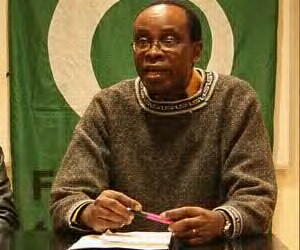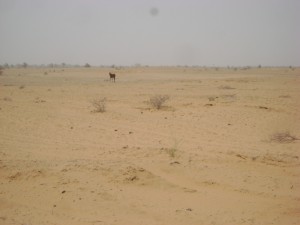Humanity’s fossil addiction will be the climate hangman unless we quickly wean ourselves off them and take a new energy trajectory. We make this assertion because evidence continues to mount and all witnesses – conservative and radical- point unwavering fingers at the oil and gas wells, coal holes and the tar sand pits of this world.

Global warming occurs due to increasing concentrations of greenhouse gases in the atmosphere. Heat comes from the sun in short waves, but when bounced off the earth they go up in long waves. Whereas the short waves pass through the atmosphere without resistance, the greenhouse gases trap some of the long waves trying to exit the atmosphere. Scientists estimate that without the greenhouse effect the earth would be as cold as minus 18 degrees Celsius. That does sound like we should celebrate the greenhouse gases in the air. Right? Well, the trouble kicks in when the concentration of the greenhouse gases gets higher than they ought to be.
The principal greenhouse gas is carbon dioxide (CO2). Its level has increased by a third since the industrial revolution while that of methane has doubled. Over the past 150 years, a period during which fossil fuels have become the main source for energy needed for electricity generation and or movement of goods and people, temperature have risen by 0.8oC and is set to gallop with increasing concentrations of greenhouse gases in the atmosphere.
As the reports of three conservative agencies have shown, unless the world embarks on a swift energy transition the course is set for calamitous global warming. Rather than seek ways to move from dependence on fossil fuels, rich nations are literally fighting to secure fossil fuels reserves to ensure they can keep guzzling same and not change their high consumption lifestyles. So-called emerging nations, like those in the BRICS bloc are equally ramping up their consumption levels as they assert the right to pollute so as to grow or as they grow. Thus growth may now be seen as a measure of pollution. Researchers estimate that at the current rate of consumption of petroleum resources, China alone can exhaust the known stock in just one decade. Indeed, it is estimated that by 2030 the USA and China will together generate 45 per cent of global carbon emissions.
Fossil fuels have supplied energy more efficiently than most other sources. The fuels have been cheaper than others because the environmental costs are externalised to poor communities and peoples whose governments are satisfied with rents from the sector and could not care less about the impunity in the fields and mines. As fossil fuels resources dwindle, we witness more desperate exploration. We see extraction in protected areas including the Arctic region. We see more aggressive moves into deeper waters and open and blatant warfare conducted in the guise of securing democracies. We can expect a spread of extreme extraction such as is already seen in fracking and tar sands exploitation.
Fracking is short for hydraulic fracturing – a process of blasting a solution of water, sand and a cocktail of chemicals into a shale bed between two to three kilometres into the belly of the earth. The mixture fractures the rock and releases the gas through bruises created by the sand. Because of its sheer depth some of the wells must puncture through aquifers causing pollution either from the chemicals used or as fallout of the violent fracturing process itself.
The pollutions and the global warming threats notwithstanding, the race to squeeze the last drops of fossils from the earth is on. An official US Department of Energy Report is quoted to have said “The world has never faced a problem like this. Without massive mitigation more than a decade before the fact, the problem will be pervasive and will not be temporary. Previous energy transitions were gradual and evolutionary. Oil peaking will be abrupt and revolutionary.”
Leaving the fossils in the ground is the unmistaken path that we ignore to our peril. The United Nations Environment Programme (UNEP) issued a report late 2012 that asked some pointed questions. The questions were premised on the fact that the aggregate voluntary emissions reductions by rich, industrialised and polluting nations would not ensure the level of reduction needed to avoid catastrophic global warming. It showed that a gap existed between the “level of ambition that is needed and what is expected as a result of the pledges.”
Previous assessments showed that for global temperatures to stay within a 2 degrees Celsius increase annual emissions ought to average 44 gigatonnes (Gt) or less by 2020. UNEP scientists, however, believe that current levels are 14% above what should be the level in 2020 and that if urgent actions are not taken an emissions gap of 8 Gt of CO2 equivalent could happen.
Other analysts like Pablo Salon believe that “With the Doha, Durban and Cancun outcomes they will hit the level of 57 GT of CO2e by 2020. So the “gap” is 13 GT of CO2e.” Solon warns, “If this “gap” is not closed by 2020 the global average temperature of the planet will increase by more than 4 to 8o C. The last time the Earth had a global warming like this was millions of years ago.”
Just before the 18th Conference of Parties of the UNFCCC at Doha in 2012, similar research findings emerged from three unexpected quarters: the World Bank, the International Energy Agency and the business outfit PricewaterhouseCoopers (PwC). The PwC report sees the safe limit of 2o C temperature increase suggested by the IPCC as unrealistic because even if current “decarbonisation” levels are doubled the world would still be heading for a temperature increase of 6oC by the end of the century.
Both the World Bank and the IEA reports suggest that for a 50-50 chance of staying below two degrees, the world requires to leave 66% of the known reserves of coal, oil and gas underground. And for an 80% chance, we have to leave 80% of those reserves untouched. Despite of all these warnings, political leaders dither and pollutions roar ahead as if there will be no tomorrow. Perhaps they know that there may not be any.
Carbon Tracker, a consultancy outfit, reached a similar conclusion earlier. According to the group, for warming to be kept at 2o C, from 2010-2040 only 565 billion tonnes of CO2 can be permitted to be emitted into the atmosphere. If this is done, there would be a 20 per cent chance of success. However, the known fossil fuels reserves have about 2795 billion tonnes of CO2 of which two thirds is coal, 22 per cent is crude oil and 13 per cent is gas. From these figures they estimate that 80 per cent of the known reserves must be left below the ground if we must hope for a slim chance of keeping temperature increase at 2o C.
On 9 May 2013 a record was made when CO2 concentration in the atmosphere reached 400 parts per million (ppm) as measured at Hawaii’s Mauna Loa observatory. It has been noted that the last time this level of CO2 was attained was 3-5 million years ago. At that time scientists believe that temperatures were 3-4 degrees warmer than it is today and that sea levels were 5-40 metres higher than we have today. In addition there was no ice in the Arctic region and there probably were no humans on the planet at that time. The concentration of carbon in the atmosphere before man’s romance with fossil fuels stood at 280ppm. In less than two centuries we have dug ourselves into deep fossil holes and marched to the climate precipice.
Look at that sea level in the long gone age. Five to 40 metres! Should the earth experience a 1 metre sea-level rise in the future what would become of the Eko Atlantic currently being built into the sea? Generally, because of the low lying nature of Nigeria’s coastal region a sea level rise of a mere 1 metre would mean the inundation of land quite a distance into the hinterland. There is an estimate that this could go as far inland as 90 kilometres.
Temperature rises pose universal problems to the whole world, but more so for Africa. This is so because Africa has 50% higher temperatures than the global average. If temperature increases by say 4oC, Africa would be 6oC warmer. The consequences would be dire. We can expect mass crop failures, concomitant starvation and mass migration for those who can.
At the Copenhagen summit in 2009, the lead negotiator for G77, Lumumba Di-Aping, denounced the 2 degrees Celsius warming target as “certain death for Africa” and as a type of “climate fascism” forced on Africa. Di-Aping then said Africa was asked to sign an agreement that would permit warming in exchange for $10 billion, and that Africa was also being asked to celebrate that deal.
Michael Mann, speaking on Democracy Now!, warned, “We have to go several million years back in time to find a point in Earth’s history where CO2 was as high as it is now. … If we continue to burn fossil fuels at accelerating rates, if we continue with business as usual, we will cross the 450 parts per million limit in a matter of maybe a couple of decades. With that amount of CO2 in the atmosphere, we commit to what could truly be described as dangerous and irreversible changes in our climate.”
Warning that we were trudging on the roadmap to idiocy, George Monbiot looked at the atmospheric pollution record and suggested a possible way out of the fix: “The only way forward now is back: to retrace our steps and seek to return atmospheric concentrations to around 350ppm, as the 350.org campaign demands. That requires, above all, that we leave the majority of the fossil fuels which have already been identified in the ground. There is not a government or an energy company which has yet agreed to do so.”
In the face of the clear warnings, oil companies and others benefiting from the world’s fossil fuels addiction continue to press on unperturbed. Again we turn to Monbiot’s blog: “Recently, Shell announced that it will go ahead with its plans to drill deeper than any offshore oil operation has gone before: almost 3km below the Gulf of Mexico. At the same time, Oxford University opened a new laboratory in its department of earth sciences. The lab is funded by Shell. Oxford says that the partnership ‘is designed to support more effective development of natural resources to meet fast-growing global demand for energy.’ Which translates as finding and extracting even more fossil fuel.”
Have the Conference of Parties helped the world to tackle climate change? The United Nations Framework Convention on Climate Change (UNFCCC) is the space where nations negotiate and should agree to act together in the common interest and for the survival of the planet. The conferences of parties (COP) to the convention have over the years turned into sessions where the powerful browbeat the weak and efforts are made to avoid responsibility and to act in narrow national or regional interest. The rapid slide down this slope took root at COP15 in Copenhagen, got deepened at COP16 in Cancun where the concept of consensus got redefined as agreement by the majority. COP17 in Durban took the medal as a conference whose critical achievement was the blatant postponement of action while the earth burns. Nations like the USA, Canada, Japan and Australia openly throw spanners in the works. Some go as far as foreclosing any participation in any legal and accountability formats proceeding from the Kyoto Protocol.
Doha was a sigh as leaders kicked the noisy decision-making can further down the road. There was little excitement about COP18 at Doha even before it took place and no celebratory vuvuzelas were heard after the event either. In the negotiations following Doha the talks in Bonn and Geneva continue to show the strains between developed, emerging economies and differently developed nations – especially with regard to emissions reductions commitments and mitigation actions.
At the negotiations held early May 2013 at Geneva the developed countries pushed for a legally binding “spectrum of commitments” from both developed and developing countries. However, their stance was based on targets nationally determined according to national capabilities and circumstances. They suggested that these would be reviewed periodically with the aim of keeping global temperature rise in line with the 2 degree Celsius goal.
Nations dance to different beats as they negotiate. Reporting from the meetings, the Third World Network informed that the developed countries also wanted “a different form of differentiation according to the emission profiles of countries rather than that which exists in the Convention (which is a differentiation between developed and developing countries). Developed countries also wanted common accounting rules for mitigation and transparency for both developed and developing countries. The United States did not want developing countries to condition their contribution to emission reductions on the availability of finance and technology transfer.”
The position of many of the developing countries was that the differentiation applied must remain the same as in the Convention keeping the lines of developed and developing countries or Annex 1/Non-annex 1 and not diminishing the importance of the historical responsibility of developed countries. They also insisted that the developed countries should take the lead in emissions reductions and for finance, technology transfer and capacity building to be provided to developing countries.
This spat can indeed be seen as the cause of the lethargy underlying the politics in the negotiations and keeping leaders from considering the need for real actions to tackle global warming. The developed nations see any real emissions reductions as potentially slowing their development curve, challenging their industries and ultimately placing heavy financial burdens on their systems and peoples. The developing nations on the other hand insist that developed countries must bear their historical responsibility for taking up as much as 80 per cent of the atmospheric space for carbon. The debates about emissions reductions can in a sense be seen as a struggle about who would colonise the remaining atmospheric space.
Climate justice advocates generally insist that those who created the climate problem must be the ones to mitigate it. However there is a rising call also from these quarters that some level of binding commitment by developing nations may be in order. Even here, the argument is that the commitments must be based on common but differentiated responsibilities.
Clearly, a bottom-up or voluntary emissions reduction would not work, as nations are unwilling to radically cut their emissions. Developed nations generally choose the market track and rely on offsets to do the mathematics of emissions reduction. Developing nations, including highly polluting and emerging nations like China and others in the BRICS formation prefer to take cover under the umbrella of the developing nations and claim the right to develop as equal to the right to pollute. The point against a bottom up, voluntary path is that there is no mechanism for closing the emissions reduction gap should the pledges not add up to the ambition needed by 2015 to enhance mitigation actions by 2020, etc.
The inability to meet climate finance and adaptation needs in the face of rising military budgets give us deep instructions. When you are standing at the precipice, you do not make progress by stepping forward. The effective action is stepping backwards. At such a time, it would make sense to be content with Keke NAPEP (commercial tricycle) going in the right direction than insisting on the luxuries of a stretch limousine heading in the wrong direction, metaphorically speaking. Pressing ahead as we see in the climate talks as well as in some localised actions simply show that humans have refused to accept the evidence around us.
With the crisis on hand, the need to provide adequate finance for climate mitigation and adaptation has not been more serious than ever before. Yet the UNFCCC processes have merely thrown up a Green Climate Fund with a literally empty kitty. The $10 billion per year over a three-year period carrot dangled in Copenhagen and the promise to ramp that up to $100 billion a year from 2020 has not materialised. To refresh our memory, we quote the “accord” below:
The collective commitment by developed countries is to provide new and additional resources, including forestry and investments through international institutions, approaching USD 30 billion for the period 2010–2012 with balanced allocation between adaptation and mitigation. Funding for adaptation will be prioritized for the most vulnerable developing countries, such as the least developed countries, Small Island Developing States and Africa. In the context of meaningful mitigation actions and transparency on implementation, developed countries commit to a goal of mobilising jointly USD 100 billion dollars a year by 2020 to address the needs of developing countries. This funding will come from a wide variety of sources, public and private, bilateral and multilateral, including alternative sources of finance.
Most wars have been fought to secure resources and to expand spheres of influence. This has become even clearer today as resource wars are fought under a variety of false pretenses. As the resources get depleted the intensity of the conflicts will increase. And so will the military budgets.
Military expenditure by the Industrialised nations went up by 50% since 2001 and rose to over $1.7 trillion in 2011. A mere fraction of that amount would save lives and help combat the ravages of global warming. Somebody figured that if a dollar represented one second it would require 32,000 years to reach 1 trillion. We are talking of huge sums here. If just 25% of the war budgets were to be set aside for climate mitigation/adaptation measure there would be $434.5 billion in the kitty and the world would be the better for it. Just consider that one stealth bomber costs a whopping $1 billion.
Another source of funds would be for the rich nations to pay for the ecological debt owed the nations and regions that have borne centuries of prodigious exploitation and environmental damage. While debates go on in scholarly circles about how such a debt could be computed and to whom it would be paid, rich nations have simply refused to consider the notion. They insist on staying on the path of limitless and continuous growth. But it is noteworthy that “an economy based on growth and resource depletion cannot function globally, since it logically implies that power is accumulated in one part of the world and applied in another. It is in essence particularist, not universal: everyone cannot exploit everyone else at the same time.”
Climate change has become big business and false solutions are celebrated just as the naked emperor was hailed as being well dressed. Whereas it has been clear for a long time now that global warming is mostly man-made and is due to the huge amount of greenhouse gases pumped into the atmosphere by polluting activities involving the use of fossil fuels, preferred actions taken by nations and industries have been patently false actions. These actions are mostly predicated on the specious notion of carbon offsetting. The notion itself is built on the creed that financial markets hold the key to solving humankind’s problems.
Carbon offsets allow polluters to keep polluting provided they pay for it in cash (carbon tax) or imagine that some trees somewhere else in the world are absorbing an equivalent carbon as they are emitting in their activities. Thus while damaging the climate, polluters perform acts of indulgence through offsets.
For example, the so-called Clean Development Mechanism (CDM) covers some of such offset schemes where projects that help reduce carbon emissions earn some carbon credits. Some really obnoxious projects get listed under the CDM. Gas to power projects utilizing gas that was otherwise flared make sense, except you consider the fact that gas flaring has been illegal in Nigeria since the gas reinjection law came into effect in 1984. There has also been a High Court judgment in the case of Jonah Gbemre versus Shell Development Petroleum Company over the gas flare at Iwerekhan, Delta State. The High Court sitting in Benin City ruled that gas flaring is an illegal activity, is unconstitutional and is an affront on the people’s human rights. That judgment was delivered in November 2005 but the flares continue to roar. The point here is that even if the gas to power plants succeeded in stopping gas flaring, they would simply have helped to stop an illegal activity and should not merit consideration as CDM projects. Qualifying projects are expected to be ones that bring in additionality, or that do some mitigating actions that would not have otherwise been done. Writing on this elsewhere we made the point that “Any compensation for such an activity flies in the face of reason. Gas flares are the most cynical manifestations of corporate insolence in the face of climate change and environmental health. The flares release greenhouse gases such as carbon dioxide, methane and nitrous and sulphur oxides. Apart from these, the flares release other harmful substances that greatly affect human health.”
Just when we thought we had overcome slavery we are getting dragged away into not just carbon colonialism but carbon slavery. Carbon was placed on the market shelf through the acceptance of the CDM at the COP held in Kyoto in 1997. That opened the floodgates for carbon speculators, introduced inaction and benefited carbon cowboys while disasters hit the world’s vulnerable communities and sometimes the rich!
Market mechanisms threw Reducing Emissions from Deforestation and forest Degradation (REDD) into the tray at the Bali climate meeting of 2009. REDD and its variants allow polluters to keep on at their business of polluting while “showing” that trees in a forest or plantation that they have secured somewhere else absorb the carbon they emit. Thus REDD projects permit pollution and cannot be said to reduce emissions. It is clear that the name itself is a sad joke. In addition, REDD does not stop deforestation, but at best defers or displaces it. A REDD scheme is a business scheme, pure and simple.
A declaration from the Climate Space at the World Social Forum held in Tunis in March 2013 insisted “We cannot put the future of nature and humanity in the hands of financial speculative mechanisms like carbon trading and REDD. REDD (Reducing Emissions from Deforestation and forest Degradation), like Clean Development Mechanisms, is not a solution to climate change and is a new form of colonialism. In defence of Indigenous Peoples, local communities and the environment, we reject REDD+ and the grabbing of the forests, farmlands, soils, mangroves, marine algae and oceans of the world, which act as sponges for greenhouse gas pollution. REDD and its potential expansion constitutes a worldwide counter-agrarian reform which perverts and twists the task of growing food into a process of “farming carbon” called “Climate Smart Agriculture.
The Climate Space also opposed “proposals that want to expand the commodification, financialization and privatization of the functions of nature through the so-called “green economy” which places a price on nature and creates new derivative markets that will only increase inequality and expedite the destruction of nature.”
Groups like the No REDD in Africa Network (NRAN) see REDD as a dangerous false solution to global warming primarily because it locks in pollution, just as the UN-REDD framework feared would be the case when the scheme was introduced. REDD locks out communities from their forests, impacts on their culture and strangulates their sources of livelihood. REDD schemes see forests and plantations as little more than carbon sinks.
Some REDD-like projects operate outside the purview of the UN-REDD coverage. One of such schemes is what has come to be called California REDD. Moves to include REDD projects in the State of California’s Global Warming Solutions Act, AB32 has drawn a lot of criticism from around the world because many believe that this would give impetus to similar schemes to mushroom around the world, granting polluters more space to keep on with their harmful activities thereby placing the world in deeper problems. It was in this wise that Oilwatch International denounced Shell oil company’s purchase of 500,000 carbon offsets credits from a forestry project on over 200,000 acres in Michigan, USA because it would grant Shell the permission to pollute at its refinery in Martinez, California.
In its own rejection of California REDD, NRAN recalls a situation in Mozambique, where a La Via Campesina study found that thousands of farmers in the N’hambita REDD project were paid meagre amounts for seven years for tending trees. “Because the contract is for ninety-nine years, if the farmer dies his or her children and their children must tend the trees without any further pay or compensation. This has been interpreted as a clear case of carbon slavery.”
Another false solution has been the presentation of agrofuels as a replacement of fossil fuels. It is a false solution because it keeps the fossil fuels paradigm and is equally polluting. Moreover it has triggered massive land grabs and even at its peak cannot replace fossil fuels because the amount of land needed to cultivate crops and the feedstock needed for production of agrofuels is simply not available on planet earth.
Geo-engineering and agricultural genetic engineering are other false solutions that lull humans to think that they can keep current polluting lifestyles and find techno-fixes for their addiction.
What must be done? Reflections on the challenge of climate change can leave us utterly exasperated considering the corporate capture of governments and the refusal of states to take actions that would benefit the people and the planet and not just the corporations. Although time is ticking fast, the peoples of the world must continually press for climate justice, understanding that no nation, rich or poor, is immune to the challenge of global warming. This has been amply illustrated by the tragic weather events that have fairly democratically impacted nations around the world. These are undeniable:
- Sea levels are rising
- Arctic ice is melting – may lead to changes in ocean circulation
- Sea-surface temperatures are rising
- Acidification of sea water due to increase of dissolved carbon dioxide
- Heavier rainfalls, hurricanes and floods are common
- Droughts and desertification getting more intense
- Crop failures
All these and more impact negatively on human lives and that of other species on planet earth. Urgent actions are needed across all nations. Among these we list:
- A just global climate treaty that recognises historical responsibility, climate debt as well as legally binding emissions reduction
- Elimination of market mechanisms (including CDM, REDD, REDD+) and all other false solutions from the climate regime
- Rapid transition from dependence on fossil fuels – including in transportation, power generation and agriculture
- 4. Recycling of wastes
- Make national laws that build mechanisms for climate mitigation and adaptation actions including coastal protection, combatting desertification
- Stop gas flaring in the Niger Delta and at Badagary immediately
- Stop fracking and other extreme extraction including drilling in the Artic region
- Creation of communities climate defence committees that would set rules for physical developments as well as monitor impacts of climate change
- Reducing consumption in line with planetary limits
- Universal respect of Mother Earth rights as captured at the Cochabamba peoples summit on Climate Change.[1]
- Leave the fossils in the soil. Besides global warming, the environmental cost of fossils cannot justify a continued reliance on the resource. Reflect on Shell’s pollution of Ogoni land as captured by UNEP. Think also about the open scars created by tar sand extraction in Alberta, Canada. Think about Texaco’s destruction of the Ecuadorian Amazonia. Who benefits from all that? Certainly not the planet!
- Set up Climate Tribunals to try Climate Criminals – the unrepentant polluters whether heads of corporations or states. Ecocide is no less a crime than genocide.
Conclusion: Our narrative must be the story of our lives told by us and dipped in our experiences “…If there is any hope for the world at all, it does not live in climate change conference rooms or in cities with tall buildings. It lives low to the ground, with its arms around the people who go to battle every day to protect their forests, their mountains and their rivers because they know that the forests, the mountains and the rivers protect them.
The first step toward re-imagining a world gone terribly wrong would be to stop the annihilation of those who have a different imagination – an imagination that is outside capitalism as well as communism. An imagination which has an altogether different understanding of what constitutes happiness and fulfilment.”[2]
It is our life, we know how the rain has beaten us and for our long. Our narrative must not be stuck in the crisis narrative imagine about us by others. We must awake, arise, mobilise and work for the transformation of our society and planet – by all legitimate means available and necessary.
Nnimmo Bassey is Director, Health of Mother Earth Foundation












